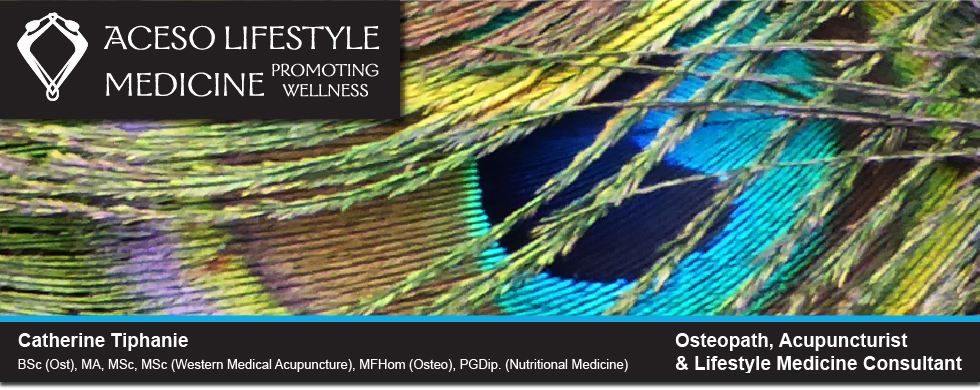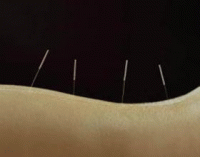
Acupuncture Research Updates
Evidence for acupuncture relevant to chronic low back pain
 A Cochrane review by Furlan et al of acupuncture and dry needling for low back pain, which included 35 RCTs, concluded that ‘for chronic low back pain, acupuncture is more effective for pain relief and functional improvement than no treatment or sham treatment – immediately after treatment and in the short term only’.
A Cochrane review by Furlan et al of acupuncture and dry needling for low back pain, which included 35 RCTs, concluded that ‘for chronic low back pain, acupuncture is more effective for pain relief and functional improvement than no treatment or sham treatment – immediately after treatment and in the short term only’.
A systematic review published in the same year by Manheimer et al also found acupuncture to be significantly more effective than sham acupuncture in chronic low back pain. More recent systematic reviews have not included meta-analysis. The Cochrane review (including meta-analysis) is being updated and will be published soon.
Since these reviews there have been several relevant studies published. The ART (Acupuncture
Randomised Trial) study (n=298) from the Charite University Medical Center in Berlin of
acupuncture for chronic low back pain shows a trend in favour of verum over minimal (superficial
non-point) acupuncture, but a significant difference between verum and the no (additional)
treatment control group. The standard deviation in the primary outcome measure in this trial
exceeded the estimate in the sample size calculation by 50%, which reduced the intended statistical power of the trial considerably.
Thomas et al reported positive results in their pragmatic trial of acupuncture in chronic low back
pain in primary care (n=241). They demonstrated effectiveness and cost-utility at 24 months – the cost per additional QALY was £4241.4 5 The primary outcome for additional acupuncture over
routine GP care was significant at 24 months but not at 12 months. This is a surprising result
following a short course of acupuncture, since the systematic reviews demonstrate a short term
effect only.
The results of the very large pragmatic ARC (Acupuncture in Routine Care) study on chronic
low back pain (n=3093 randomised; 11 630 total cohort) confirm effectiveness and cost
effectiveness of acupuncture, with the cost per additional QALY of €10 526.6
The GERAC (German Acupuncture trial) trial on low back pain (n=1162)7 found acupuncture
and minimal (sham) acupuncture to be superior to guideline-based standard treatment, however,
acupuncture was not statistically superior to minimal (superficial non-point) acupuncture. On the
basis of this, the German health authorities have decided that acupuncture will be included in
routine reimbursement by social health insurance funds for the treatment of low back pain. One of
the key findings in this trial was that the minimal (sham) acupuncture (often viewed as a ‘placebo’
control) was superior to guideline-based standard care (twice as good in the primary outcome
measure). This calls into question the validity of making judgements about the clinical relevance of the difference between acupuncture and minimal (sham or ‘placebo’ control) acupuncture.
A large (n=638), four-arm sham controlled and comparative trial performed in the US demonstrated no difference between individualised acupuncture, standardised acupuncture or simulated acupuncture (using blunted cocktail sticks) on mechanical low back pain, but all three groups were more than twice as effective as usual care alone.
The NICE guidelines for the early management of persistent non-specific low back pain (between 6 months and 1 year) include consideration of 12 sessions of acupuncture over 3 months.
This information comes from the following document:
The Latest Evidence for Acupuncture – updated 28/02/11
Compiled by Mike Cummings, Medical Director of the British Medical Acupuncture Society
Contact: Allyson Brown, Support Manager to MD BMAS, 02077139437, BMASLondon@aol.com
To read more, including evidence for acupuncture in the treatment of chronic headache, knee osteoarthritis (OA), neck and shoulder pain, and fibromyalgia – please click here
To read more about Acupuncture for Low Back Pain in Pregnancy – please click here
To read more about The Safety of Acupuncture – Evidence from the UK – please click here
To read more about Defining an Adequate Dose of Acupuncture using a Neurophysiological Approach – A Narrative Review of the Literature – please click here
To read more about The Relevance of Childhood Developmental Factors to the Efficacy of Acupuncture on the Affective Component of Back Pain – please click here
To return to the main page on Research please click here
Copyright ©2012 - 2023 Catherine Tiphanie. All Rights Reserved. Privacy Policy
